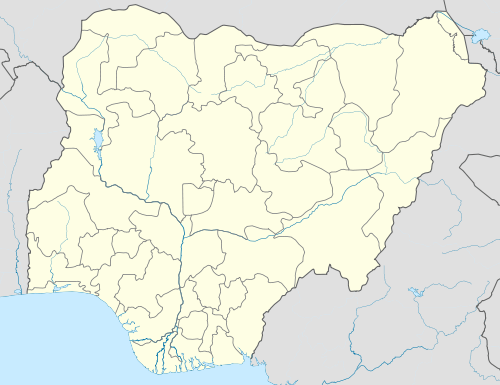Ofala Festival
The Ofala Festival, is an annual ceremony practiced by the indigenes of Onitsha, and of recent years by other neighboring Igbo communities such as Nnewi in Anambra State, SouthEastern Nigeria and Ukpo in Dunukofia Local Government Area.[1] It serves as a rites of renewal of the king or Obi and it is similar to the Igue festival in Benin and the Ine , Osi or Ogbanigbe Festival in many mid-West Igbo communities of Nigeria. The term ofala, is derived from two Igbo words - ofo (English: authority) and ala (English: land).[2] The festival is celebrated within two days mostly in October by the Obi (English: king).
History
According to some oral history sources, the Ofala Festival can be traced back to the 16th Century when Onitsha people emigrated from Benin to the Eastern banks of the River Niger presently known as the city of Onitsha and brought with them among other customs, the tradition of monarchy. The festival is akin to the Igue Festival celebrated annually by the Oba of Benin. Some historians also believe the festival is related to the New Yam Festival in Onitsha and devotion of the King to the safety of his people.[3]
The festival marks the end of a period of retreat sometimes called Inye Ukwu na Nlo[3] when the Obi remains incommunicado and undergoes spiritual purification for the good of the community. At the end of the weeklong retreat the Obi emerges during the Ofala to bless his subjects and say prayers for the community. Ofala is celebrated annually beginning from the coronation of the Obi to his death, the latter of which is called "the last Ofala".[4]
Ceremony and purpose
The festival usually starts with a traditional twenty-one gun salute followed by an all night Ufie (royal gong) drumming, dancing and other cultural activities. In the afternoon, the Obi's cabinet of chiefs, guests from other communities, age groups, women and youth of the community usually throng the palace grounds or Ime Obi dressed in traditional attires befitting the festival occasion. The royal music or Egwu Ota is played during the entrance of the Ndichie or red cap chiefs who arrive after the gathering of the crowd and bringing along a few of their friends and family members their procession to the palace. The highlight of the festival is the emergence of the Obi in his royal regalia to the cheer of the crowd,[5] a cannon shot announces the entrance of the Obi who is usually dressed in ceremonial robe and carries a bronze sword on his hand, he walks to the sides of the arena or a third of the arena acknowledging the cheers of the gathering. The Obi then retires and subsequently, the red cap chiefs pays homage to him according to seniority, thereafter both the Obi and the chiefs reappear after the firing of another cannon shot.[3] During the second appearance the Obi dances in the arena, something that is rarely seen and his steps cover more distance than the first appearance. Then the visiting chiefs and guests pay homage to the Obi. The festival is also sometimes an occasion for the Obi to honour individuals with chieftaincy titles.[6]
Arts
Music and visual arts have become a part of the festival. The 2015 edition held a visual arts exhibition called Oreze III, the event had a display by various artists and 20 busts depicting departed Onitsha kings.[7]
References
- ↑ Shehu Abubakar (15 January 2010). "Ofala festival: Commoner's last hope in Ukpo". Daily Trust. Retrieved 4 March 2016.
- ↑ Abah Adah; Chinelo Chikelu; Paul Chiama (14 March 2014). "Nigeria's 10 Famous Festivals". Leadership Nigeria. Retrieved 26 July 2015.
- 1 2 3 East-Central State (Nigeria). (1974). Traditional festivals in East Central State. Enugu: Information Division, Ministry of Information and Home Affairs.
- ↑ Obiageli Nnaka. "Ofala Festival". National Institute for Cultural Orientation. Retrieved 3 March 2016.
- ↑ "Glee as Onitsha marks Ofala". The Nation. 19 October 2008. Retrieved 26 July 2015.
- ↑ Ademola Iginla (8 October 2012). "The 11th Ofala Festival In Onitsha". Osun Defender. Retrieved 26 July 2015.
- ↑ "Boosting Ofala Festival With Art Content." Africa News Service 23 Nov. 2015. Business Insights: Global. Web. 4 Mar. 2016.
